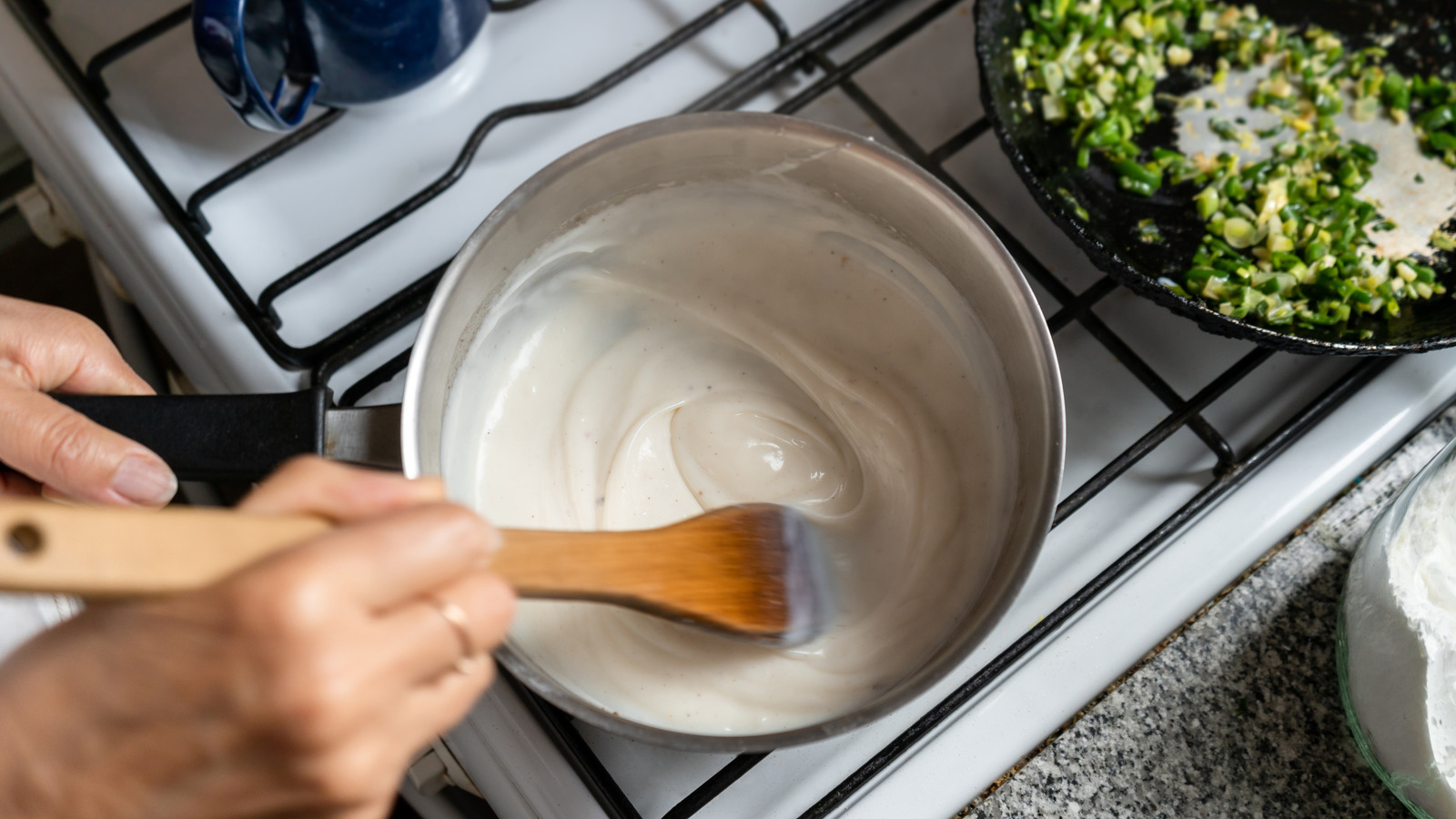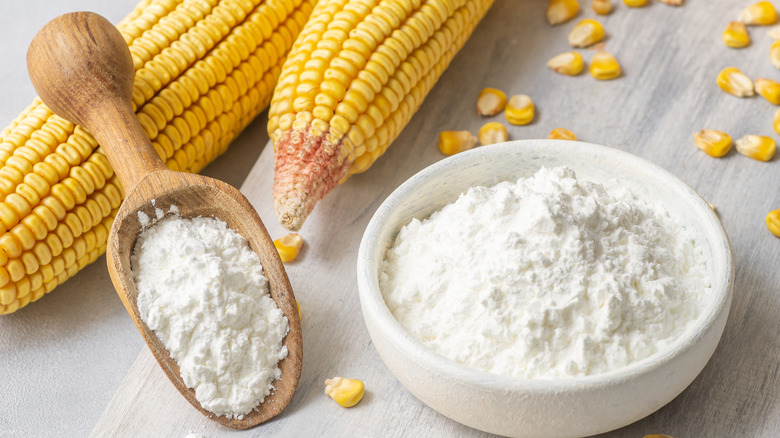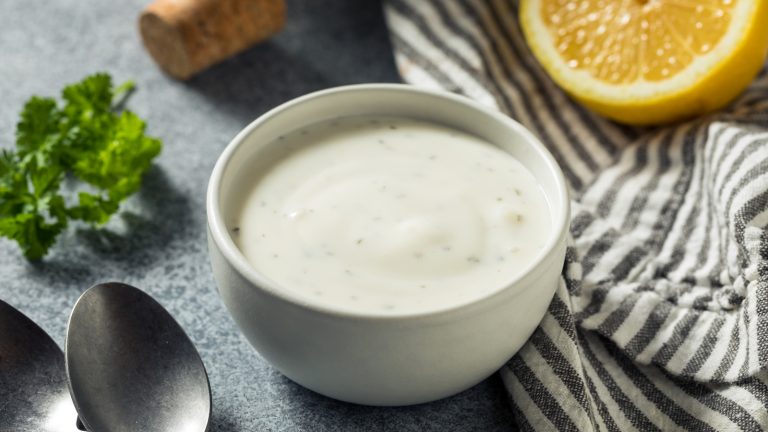Both flour and cornstarch can be used to make a sauce thicker, but they have different compositions, so they can’t always be used interchangeably. While cornstarch only contains starch, all-purpose flour contains protein and fiber as well as starch. If you only have one or the other on hand when you’re cooking, it’s helpful to understand which will work best to get the effects you want.
Flour is the perfect substitute for cornstarch if you are making a sauce that contains fat, like butter or milk, or if you want a rich, thick sauce like gravy. If you create a roux by slowly heating an equal mixture of flour and fat over low heat, your sauce will be richer and have a slight nutty taste. You should also choose flour if your sauce has a high acid content, as cornstarch doesn’t thicken up as well alongside acidic ingredients.
When we spoke to Leanne Tran, the lead pastry chef at Le Crocodile, Bar Blondeau, and Wythe Hotel, she offered a great tip for properly adding flour so that it doesn’t get clumpy. “You must be sure to sprinkle it in carefully and cook the mixture well (let bubble and simmer for several minutes) to avoid a floury and grainy texture,” Tran advises. Additionally, if you are substituting flour for cornstarch in a recipe, remember that you must use twice as much flour as cornstarch. Be sure also to fully cook the flour to kill bacteria and prevent an unpleasant taste.
When to use cornstarch instead of flour
As for cornstarch, it’s best to use if you’re making a dairy-based sauce, if you’re concerned about your sauce tasting like flour, or if you can’t cook your sauce long enough to fully cook the flour. Cornstarch has a neutral flavor, so you won’t need to worry about it interfering with the taste of your sauce. Using flour as a thickener will make your sauce more opaque, so if you’re trying to achieve a more translucent or glossy appearance, choose cornstarch instead. If you’re making a glaze or stir-fry sauce, you’ll want that nice, high-shine gloss.
Similar to flour, cornstarch also doesn’t need to be cooked as long. In fact, one mistake to avoid with cornstarch is overcooking it, which will make your sauce sticky or gummy. Since flour contains gluten, you can use cornstarch as a substitute for flour in sauce recipes to make them gluten-free, as it is gluten-free. This means you can also use it as a substitute for flour when you want to thicken a sauce, soup, or filling. Another good tip if you’re using cornstarch as a thickening agent is to create a cornstarch slurry first. Using a small whisk, mix together equal parts cornstarch and warm water before you add the cornstarch to your sauce.






